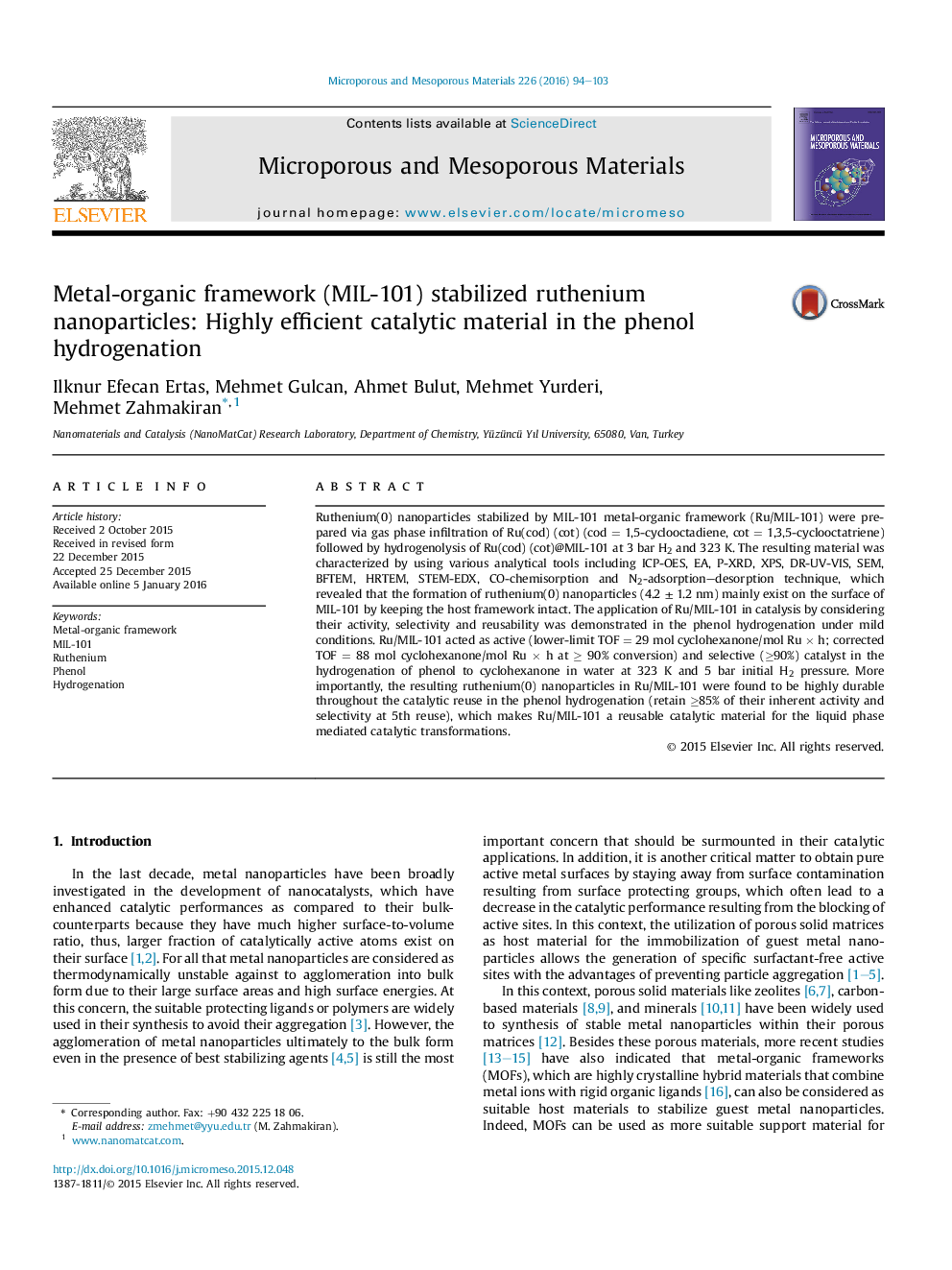| Article ID | Journal | Published Year | Pages | File Type |
|---|---|---|---|---|
| 72175 | Microporous and Mesoporous Materials | 2016 | 10 Pages |
•Ru/MIL-101 synthesized via gas phase infiltration followed by H2 reduction method.•Ru/MIL-101 acted as highly active and selective catalyst in phenol hydrogenation.•Ru/MIL-101 showed great stability throughout the catalytic reusability.
Ruthenium(0) nanoparticles stabilized by MIL-101 metal-organic framework (Ru/MIL-101) were prepared via gas phase infiltration of Ru(cod) (cot) (cod = 1,5-cyclooctadiene, cot = 1,3,5-cyclooctatriene) followed by hydrogenolysis of Ru(cod) (cot)@MIL-101 at 3 bar H2 and 323 K. The resulting material was characterized by using various analytical tools including ICP-OES, EA, P-XRD, XPS, DR-UV-VIS, SEM, BFTEM, HRTEM, STEM-EDX, CO-chemisorption and N2-adsorption–desorption technique, which revealed that the formation of ruthenium(0) nanoparticles (4.2 ± 1.2 nm) mainly exist on the surface of MIL-101 by keeping the host framework intact. The application of Ru/MIL-101 in catalysis by considering their activity, selectivity and reusability was demonstrated in the phenol hydrogenation under mild conditions. Ru/MIL-101 acted as active (lower-limit TOF = 29 mol cyclohexanone/mol Ru × h; corrected TOF = 88 mol cyclohexanone/mol Ru × h at ≥ 90% conversion) and selective (≥90%) catalyst in the hydrogenation of phenol to cyclohexanone in water at 323 K and 5 bar initial H2 pressure. More importantly, the resulting ruthenium(0) nanoparticles in Ru/MIL-101 were found to be highly durable throughout the catalytic reuse in the phenol hydrogenation (retain ≥85% of their inherent activity and selectivity at 5th reuse), which makes Ru/MIL-101 a reusable catalytic material for the liquid phase mediated catalytic transformations.
Graphical abstractFigure optionsDownload full-size imageDownload as PowerPoint slide
